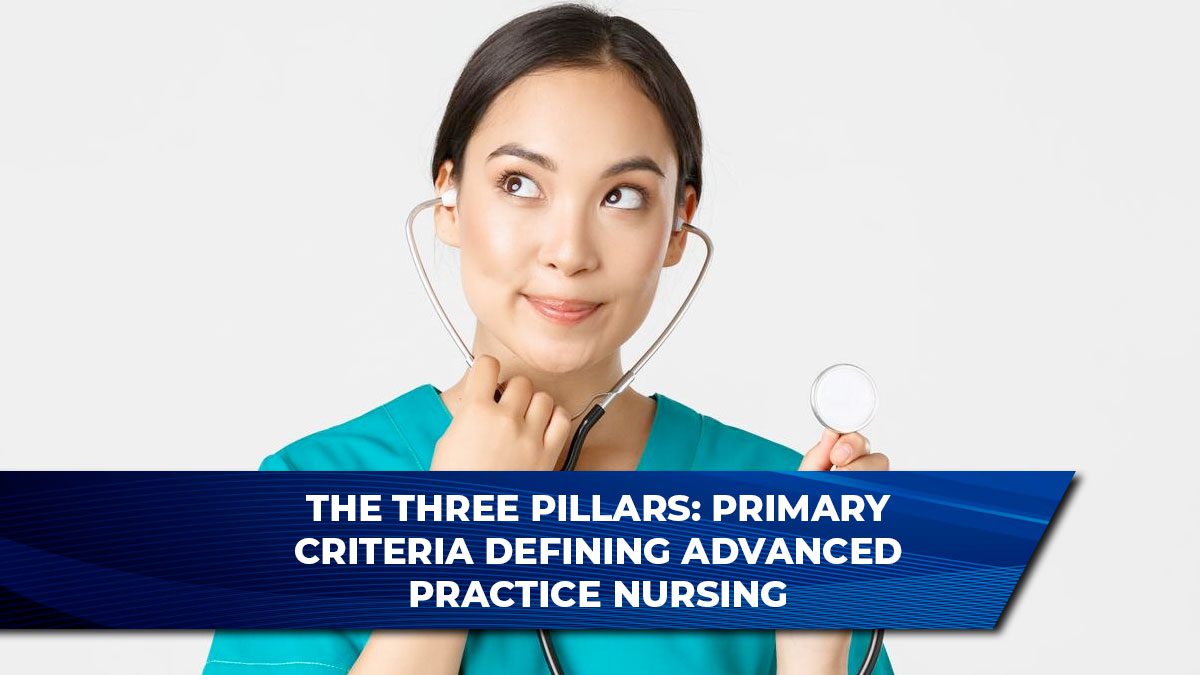Advanced Practice Nursing Demystified: Differentiating Roles and Responsibilities
Differentiating Advanced Practice Roles: Operational Definitions of Advanced Practice Nursing
As noted earlier, it is critical to the public’s understanding of advanced practice nursing that APRN roles and resulting job titles reflect actual practices. Because actual practices differ, job titles should differ. The following corollary is also true—if the actual practices do not differ, the job titles should not differ.
Advanced Practice Registered Nurses (APRNs) hold a unique position in the healthcare system, bridging the gap between traditional nursing roles and the complex demands of modern medical care. However, confusion often arises when job titles do not accurately reflect the practices performed by these professionals. This article delves into the importance of differentiating advanced practice roles through clear operational definitions, ensuring that both healthcare providers and the public can fully understand the scope and responsibilities of APRNs.
One of the significant challenges in advanced practice nursing is the inconsistent use of job titles. For example, Clinical Nurse Specialists (CNSs) have sometimes been rebranded as clinical coordinators or clinical educators, even when their practices remain consistent with CNS roles. This mislabeling obscures the CNS’s role, leading to confusion among patients, healthcare providers, and regulators alike. The state of Virginia is a case in point, where all four APRN roles are labeled as licensed nurse practitioners, regardless of their actual practice focus. This blanket titling further muddies the waters of role clarity and public understanding.
Table: Examples of APRN Roles and Corresponding Job Titles
| APRN Role | Common Job Titles | Description | Link to Reference |
|---|---|---|---|
| Clinical Nurse Specialist (CNS) | Clinical Coordinator, Educator | Focuses on improving patient outcomes and nursing practices within healthcare settings. | Consensus Model |
| Nurse Practitioner (NP) | Licensed Nurse Practitioner | Provides primary and specialty care, often serving as a patient’s primary healthcare provider. | Virginia Licensing |
| Certified Nurse Midwife (CNM) | Midwife, Women’s Health Specialist | Provides care to women, including gynecological exams, family planning, and prenatal care. | ACNM |
| Certified Registered Nurse Anesthetist (CRNA) | Nurse Anesthetist | Specializes in anesthesia care and pain management across a variety of healthcare settings. | AANA |
The Need for Clear Operational Definitions in Advanced Practice Nursing
The need for clear operational definitions in advanced practice nursing cannot be overstated. When job titles and roles are not aligned, it not only creates confusion but also undermines the public’s trust in the healthcare system. The Consensus Model for APRN Regulation, developed by the APRN Joint Dialogue Group, provides a framework for understanding and standardizing these roles across the United States. According to the model, each APRN role should be clearly defined and differentiated based on its scope of practice, education, and certification.
However, despite the Consensus Model’s guidelines, discrepancies in job titles persist. This inconsistency can lead to misunderstandings about the qualifications and responsibilities of APRNs, potentially impacting patient care. For example, a CNS rebranded as a clinical coordinator may still perform the same duties but under a title that does not fully represent their expertise, leading to diminished visibility of the CNS role in the clinical setting.
The Impact of Mislabeling on APRN Practice
Mislabeling APRN roles not only affects role clarity but also has broader implications for healthcare delivery. When APRNs are not accurately titled, it can hinder their ability to practice to the full extent of their education and training. This can result in underutilization of their skills and a lack of recognition for the contributions they make to patient care and outcomes.
Moreover, the public’s understanding of advanced practice nursing is compromised when job titles do not align with actual practices. Patients may be confused about the level of care they are receiving and from whom, which can erode trust in the healthcare system. For healthcare providers, unclear role definitions can lead to overlaps in responsibilities or gaps in care, further complicating the delivery of effective healthcare.
Ensuring Accurate Role Titles in Advanced Practice Nursing
To address these issues, healthcare institutions must prioritize the accurate titling of APRN roles. This requires a commitment to aligning job titles with the actual practices performed by APRNs. For instance, if a CNS is primarily involved in clinical education and coordination, their title should reflect their CNS expertise rather than a generic educator or coordinator role.
Regulatory bodies also play a critical role in ensuring that APRN titles are consistent with their scope of practice. By adopting and enforcing the guidelines set forth in the Consensus Model, regulators can help standardize APRN roles across the country, reducing confusion and promoting a clearer understanding of advanced practice nursing.
The Role of Education in Defining APRN Titles
Education is another key factor in defining APRN roles. Advanced practice nursing requires specialized education and training, which should be reflected in the job titles used by healthcare institutions. For example, the title of Nurse Practitioner (NP) should only be used for those who have completed the necessary education and certification requirements, ensuring that the title accurately represents their qualifications.
Educational programs also have a responsibility to clearly communicate the scope of practice associated with each APRN role. This ensures that graduates are well-prepared for the roles they will assume and that their job titles accurately reflect their education and training.
FAQs on Differentiating Advanced Practice Roles
Q: What is the importance of differentiating advanced practice roles?
A: Differentiating advanced practice roles is crucial for ensuring that job titles accurately reflect the practices performed by APRNs. This clarity helps patients, healthcare providers, and regulators understand the scope and responsibilities of APRNs, promoting trust and effective healthcare delivery.
Q: How does the Consensus Model help in differentiating APRN roles?
A: The Consensus Model provides a framework for standardizing APRN roles across the United States. It outlines guidelines for role definitions, education, and certification, helping to ensure that APRN titles are consistent with their scope of practice.
Q: What are the consequences of mislabeling APRN roles?
A: Mislabeling APRN roles can lead to confusion, underutilization of skills, and a lack of recognition for the contributions of APRNs. It can also compromise the public’s understanding of advanced practice nursing and hinder the delivery of effective healthcare.
Q: Why is education important in defining APRN titles?
A: Education is essential in defining APRN titles because it ensures that job titles reflect the specialized training and qualifications required for advanced practice nursing. This helps maintain consistency and clarity in APRN roles.
Q: How can healthcare institutions ensure accurate APRN titles?
A: Healthcare institutions can ensure accurate APRN titles by aligning job titles with the actual practices performed by APRNs and adopting the guidelines set forth in the Consensus Model. This commitment to accurate titling promotes role clarity and effective healthcare delivery.
Q: What role do regulatory bodies play in differentiating APRN roles?
A: Regulatory bodies are responsible for enforcing the guidelines for APRN roles, ensuring that job titles are consistent with the scope of practice. This helps standardize APRN roles across the country and reduces confusion in the healthcare system.
Differentiating advanced practice roles through clear operational definitions is essential for ensuring that APRNs are recognized for their expertise and contributions to healthcare. By accurately titling these roles and aligning them with the practices performed, healthcare institutions, educators, and regulators can promote a clearer understanding of advanced practice nursing, benefiting both patients and providers alike.










